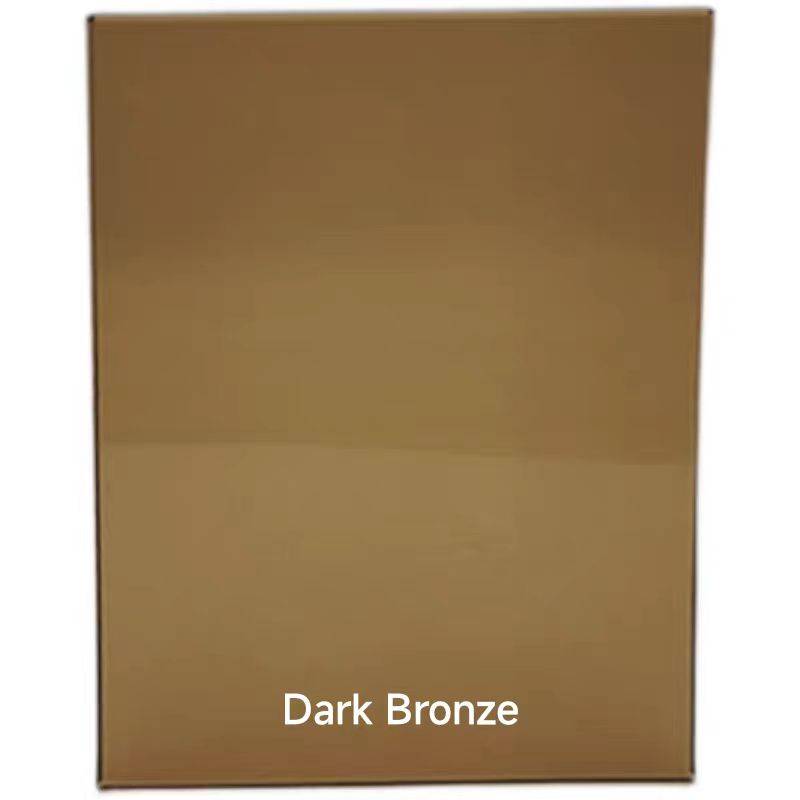

The Elegance of Mirror Glass Design Reflecting Beauty and Functionality
In the realm of interior design and architecture, mirror glass has emerged as a transformative element that not only enhances aesthetics but also serves a functional purpose. Its versatility, reflective properties, and ability to create an illusion of space have made it a favored choice among designers and homeowners alike. This article delves into the multifaceted world of mirror glass design, exploring its applications, benefits, and the innovative trends shaping its use today.
The Allure of Mirror Glass
At its core, mirror glass is a type of glass that has been treated to create a reflective surface. This property allows it to bounce back light, making spaces feel brighter and more expansive. The allure of mirror glass lies not just in its reflective qualities but also in its ability to seamlessly blend with various design styles—from modern minimalism to classic elegance.
When strategically placed in a room, mirror glass can dramatically alter the visual dynamics of the space. For instance, a floor-to-ceiling mirrored wall can create a sense of depth, making a small room appear larger. Similarly, mirrored furniture pieces, such as coffee tables or cabinets, can add a touch of glamour while serving practical storage needs.
Applications of Mirror Glass Design
1. Interior Spaces In interior design, mirror glass is widely used across different environments. In residential settings, it is commonly found in living rooms, bedrooms, and bathrooms. Designers often use it in decorative accents, such as framed mirrors, mirrored wallpaper, or tile backsplashes. In commercial spaces, mirror glass serves both functional and aesthetic purposes, often seen in restaurants, retail outlets, and offices to enhance ambiance and attract customers.
2. Architecture Beyond interiors, mirror glass has been embraced in contemporary architecture. Entire buildings clad in reflective glass panels can blend into their surroundings, reducing visual impact while offering stunning views. This use of mirror glass not only contributes to sustainable design by reflecting natural light and lowering energy consumption but also creates a dynamic interplay between the structure and its environment.
3. Art Installations Artists have long recognized the power of reflective surfaces in their work. Mirror glass installations create interactive experiences, allowing viewers to engage with their reflections and the surrounding space. These installations challenge perceptions, forcing observers to reconsider their relationship with the artwork and its environment.

Benefits of Using Mirror Glass
1. Illusion of Space One of the primary benefits of mirror glass design is its ability to create an illusion of space. In compact living areas, mirrors can visually expand the room, making it feel airier and more open. This is particularly advantageous in urban settings where living spaces are often limited.
2. Light Enhancement Mirror glass effectively amplifies natural light, reducing the need for artificial lighting during the day. By reflecting sunlight, it can brighten dark corners and create a more welcoming atmosphere, which is crucial for creating spaces that feel warm and inviting.
3. Versatility The versatility of mirror glass is unmatched. It can be incorporated into a vast array of design styles, making it suitable for any home or commercial space. Whether through sleek, modern finishes or ornate, vintage frames, mirror glass can harmonize with existing decor or stand out as a statement piece.
Innovative Trends in Mirror Glass Design
As design trends evolve, so does the use of mirror glass. Current innovations include the integration of smart technology, allowing for interactive mirrors that can display information, control lighting, or even function as televisions. Additionally, colored and tinted mirror glass is gaining popularity, offering a fresh take on traditional clear mirrors. These options open new possibilities for creativity, allowing designers to play with color and light in unprecedented ways.
Sustainability also plays a significant role in current mirror glass trends. Many manufacturers are focusing on eco-friendly production processes and materials, aligning with the growing demand for sustainable design solutions.
Conclusion
Mirror glass design stands at the intersection of beauty and functionality, offering endless possibilities for enhancing both interior and exterior spaces. Its unique reflective properties not only create visually appealing environments but also serve practical purposes by brightening spaces and creating an illusion of expansiveness. As design trends continue to evolve, mirror glass will undoubtedly remain a staple element, reflecting the ever-changing landscape of creativity in architecture and interior design. Whether you are looking to transform your home or create a statement in a commercial space, the elegance of mirror glass design is an investment that will stand the test of time.